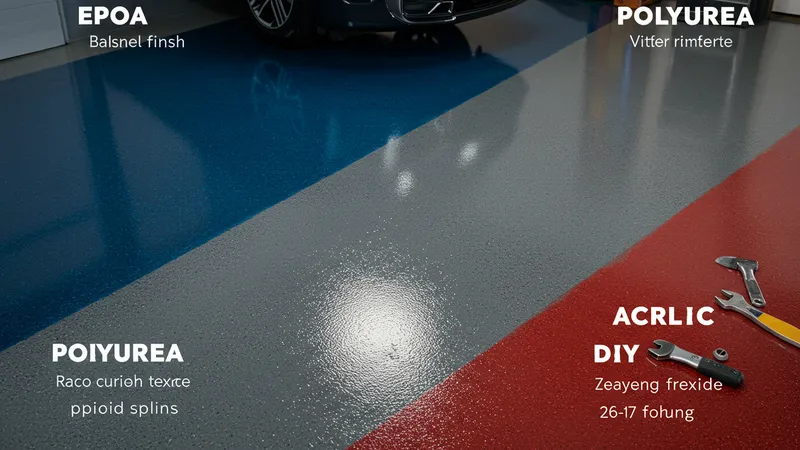
The Complete Guide To Garage Floor Coatings: Types, Costs, And Benefits
Types of Garage Floor Coatings: Comparing Materials and Performance
Understanding the core differences between epoxy, polyurea, and acrylic garage floor coatings is crucial for any informed decision. Epoxy remains the most widely used, thanks to its balanced blend of cost, strength, and chemical resistance. Polyurea, often selected in commercial settings, boasts rapid curing and exceptional flexibility for climates with temperature swings. Acrylic solutions, while fast to apply, typically fall short in longevity compared to their epoxy or polyurea counterparts, but may appeal to those looking for a quick refresh.

Rust-Oleum EpoxyShield is a classic example of a solvent-based epoxy that balances ease of use and performance. With a glossy finish and moderate chemical resistance, it handles oil, brake fluid, and cleaning agents well—common hazards in U.S. garages. For households where DIY installation is a necessity, its clear, straightforward instructions reduce the risk of common mistakes like uneven coverage or premature peeling.
On the other hand, premium kits like Armor Clad rely on two-part epoxy or polyurea blends, reinforcing the surface with tough, interlocking polymers. This results in a denser, more damage-resistant floor that stands up to dropped tools and rolling equipment. The additional topcoat, included in higher-end kits, further enhances stain and UV resistance—an advantage for garages with direct sunlight or exposed driveways.
The application process can greatly differ among these options. Budget-friendly coatings such as Quikrete require careful surface prep and a 24- to 48-hour cure time, while advanced polyurea systems might return a garage to full use in a single day. The divergence in drying times, environmental tolerances, and application complexity all play major roles in the selection process, impacting not just convenience but the ultimate longevity of the coated floor.